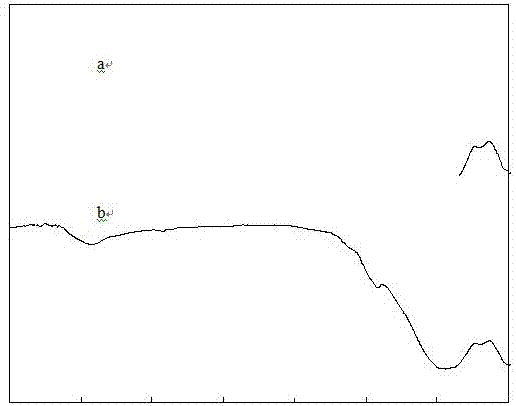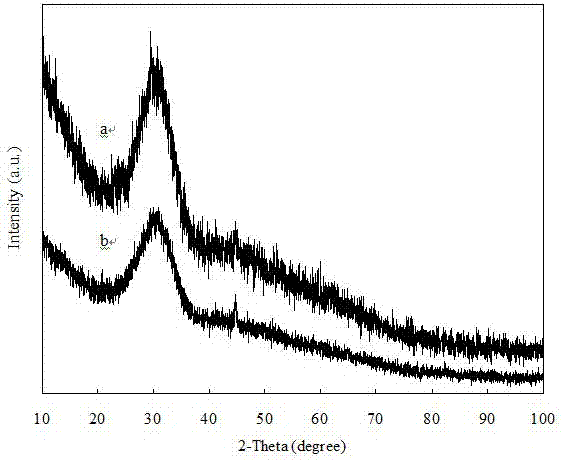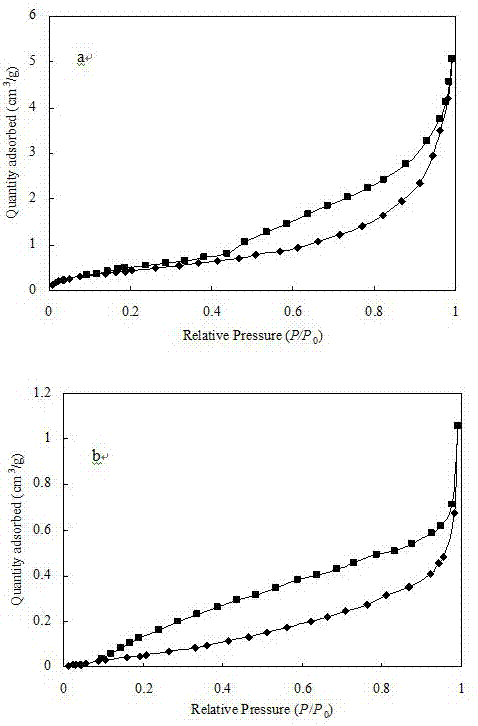Preparation method and application method of adsorbent for treating reactive dye wastewater
A technology of reactive dyes and application methods, which is applied in the field of wastewater treatment technology and environmental protection, can solve the problems of regeneration, large amount of sludge, and high cost, and achieve the effect of enhanced ability, good adsorption characteristics, and high-efficiency adsorption
- Summary
- Abstract
- Description
- Claims
- Application Information
AI Technical Summary
Problems solved by technology
Method used
Image
Examples
Embodiment 1
[0034] A kind of adsorbent preparation method for treating reactive dye wastewater, its implementation steps are as follows:
[0035] The first step is to wash the discarded blast furnace water-quenched slag with tap water, and then continue to wash with distilled water to remove surface impurities and then filter and separate; then put it in a blast drying oven and dry it at 100-105 °C for 24 hours; finally, dry the The blast furnace water-quenched slag is mechanically crushed, passed through a 100-mesh sieve, and the under-sieve is taken, and put into a dryer for subsequent use;
[0036] In the second step, take 10 g of blast furnace water-quenched slag obtained in the first step, add 100 ml of cetyltrimethylammonium bromide with a concentration of 0.008 mol / L, and shake at a constant temperature in a water bath at 25 °C and 120 r / min The product was obtained by continuous shaking in a vacuum cleaner for 24 h; the product was repeatedly washed with deionized water to neutral...
Embodiment 2
[0042] A kind of application of reactive dye wastewater adsorbent, the steps are: the adsorbent 1 ~ 16 g / L prepared by embodiment 1 is added 50 ml concentration is 40 mg / L, and the solution ion strength is the reactive brilliant red of 0 mol / L In the waste water, shake at 25 °C, pH value is 2, rotation speed is 120 rpm, time is 60 min, after the reaction is completed, the adsorbent is separated from solid and liquid.
[0043] Measure the concentration of reactive brilliant red in the wastewater after separation, calculate the removal rate and adsorption capacity, see Figure 5 , Figure 5 It is a schematic diagram of the effect of adsorbent dosage on the adsorption effect of reactive brilliant red. Depend on Figure 5 It can be seen that when the dosage of adsorbent increases from 1 g / L to 8 g / L, the removal rate of reactive brilliant red also increases from 27.34% to 92.04%. When the dosage exceeds 8 g / L, the removal rate of The rate increases slowly, and the curve tends t...
Embodiment 3
[0045] The adsorbent of the present invention has the removal rate of reactive brilliant red wastewater under different pH conditions. Add 8 g / L of the adsorbent prepared in Example 1 to 50 ml of reactive brilliant red wastewater with a concentration of 40 mg / L and a solution ionic strength of 0 mol / L, shake at 25 °C, and the pH value is 2 to 12 , the rotation speed is 120 rpm, and the time is 60 min. After the reaction is completed, the adsorbent is separated from the solid and liquid.
[0046] Measure the concentration of reactive brilliant red in the wastewater after separation, calculate the removal rate and adsorption capacity, see Figure 6 , Figure 6 It is a schematic diagram of the influence of pH on the adsorption effect of reactive brilliant red. Depend on Figure 6 It can be seen that with the increase of pH, both the removal rate and the adsorption amount show a downward trend. When the pH is 2, the maximum removal rate and adsorption amount are 95.55% and 4.78...
PUM
| Property | Measurement | Unit |
|---|---|---|
| Specific surface area | aaaaa | aaaaa |
| Average pore size | aaaaa | aaaaa |
| Adsorption capacity | aaaaa | aaaaa |
Abstract
Description
Claims
Application Information
 Login to View More
Login to View More - R&D
- Intellectual Property
- Life Sciences
- Materials
- Tech Scout
- Unparalleled Data Quality
- Higher Quality Content
- 60% Fewer Hallucinations
Browse by: Latest US Patents, China's latest patents, Technical Efficacy Thesaurus, Application Domain, Technology Topic, Popular Technical Reports.
© 2025 PatSnap. All rights reserved.Legal|Privacy policy|Modern Slavery Act Transparency Statement|Sitemap|About US| Contact US: help@patsnap.com



